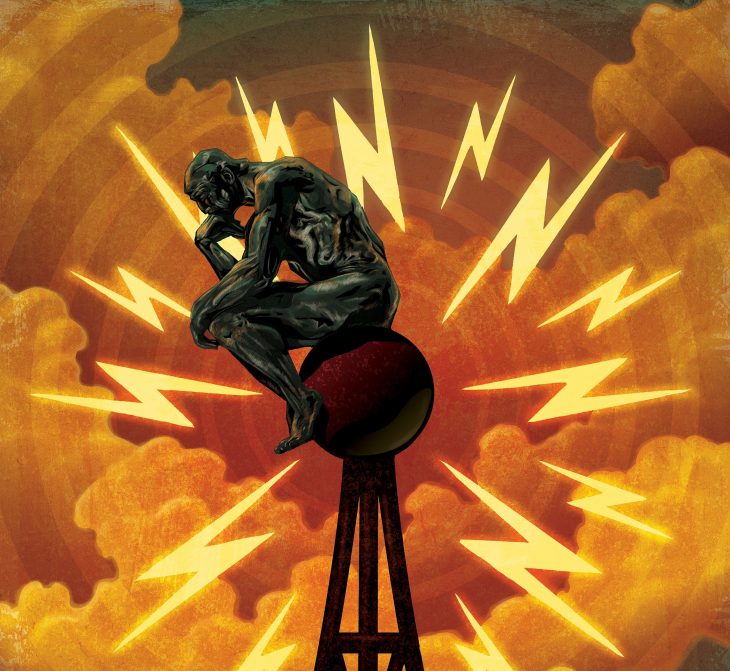
By Len St-Aubin
DEBATE ABOUT BILL C-10 thus far has focused on Heritage Minister Steven Guilbeault’s goal to make big foreign online audio and video streamers, like Netflix, Disney+, Amazon Prime, YouTube and Spotify, contribute to the creation of Canadian content.
But Bill C-10’s scope is vast. It will impact broadcasting and the internet in Canada, and all Canadians
It’s a valid public policy goal to expect big foreign streamers which have significant market share and revenues in Canada to engage with Canadian creators in the production of Canadian stories for Canadian and global audiences. It’s a valid question whether amending the Broadcasting Act is an effective way to do that.
This series of three articles considers that question from different perspectives. This first one looks at how Bill C-10 would impact Canadian television broadcasting, and what those outcomes would mean for Canadians.
The second looks at how Bill C-10 (the bill meant to amend the Broadcasting Act) would impact the internet in Canada, whether it’s an effective way to engage online streamers in Cancon and, again, what it would mean for Canadians.
The third proposes an alternative — because Bill C-10 is too problematic, even counterproductive, for Canadian broadcasting, the internet, and Canadians.
Integrating foreign streamers into Canadian broadcasting is no easy feat
Bill C-10 aims to “modernize” the Broadcasting Act by sweeping-in online (internet) audio and video media or “streamers”. The rationale for this approach to engaging online streamers in Cancon is the impact of growing competition from unregulated internet audio and video on the regulated broadcasting system. This reflects the January 2020 report of the Broadcasting and Telecommunications Policy Review (BTLR) Panel.
Canadians can now stream audio and video from millions of apps and websites worldwide and Bill C-10 would fundamentally change the legal status, in Canada, of virtually all streamers, making them broadcasters when Canadians access them. Only content that users themselves upload to social media (user generated content, or UGC), and UGC-only websites, are excluded. So the reach is truly vast (That’s for the next article).
Most foreign streamers have no presence in Canada. They would be “broadcasters” only if they let Canadians access their content. So, their commercial interests would dictate their response — and Bill C-10’s impacts.
Integrating well-financed global streamers into Canada’s protected domestic system — laden with complex regulation and cross-subsidies — would be no easy feat.
Broadcasting is a protected market and Cancon support is a closed loop
Canada’s broadcasting system evolved in a protected domestic market. CRTC regulation controlled market entry and Canadians’ access to foreign services. Since broadcasting’s beginnings, the popularity of U.S. entertainment content, combined with that protected domestic market, made it cheaper, less risky, and more profitable, for Canadian broadcasters to buy foreign than to finance Cancon originals.
So, regulation makes Canadian broadcasters direct a portion of their revenues into Cancon, some of which gets subsidized. In return, regulation protects Canadian broadcasters’ rights for foreign content in Canada. News and sports respond to market demand, so regulation and subsidies have focused on original scripted drama, comedy and documentaries — the CRTC calls that “programs of national interest” or PNI.
The whole system is a closed loop of Cancon support.
Online audio and video disrupt the closed domestic system
Global distribution of audio and video over the internet has lowered costs, fostered an abundance of content, and given Canadians direct access. Internet-native streamers like Netflix pivoted to direct-to-consumer, on-demand distribution, followed by innovative multi-platform media companies like Canada’s WildBrain and Blue Ant. More than ever, exclusive original content is a highly valued competitive necessity.
So Canadian broadcasters’ long-standing content middleman business model is being disintermediated. And global online streamers have radically different market incentives and commercial interests than do legacy broadcasters.
Be careful what you wish for…
Still, Canadian Heritage Minister Steven Guilbeault says the web giants will comply. He’s forecasted $830 million to $1 billion in new Cancon financing, based on 25% to 45% of their gross revenues in Canada.
Some will, some won’t. Commercial interests will dictate: Canada’s not a big market.
Either way, Bill C-10 has a high risk of problematic outcomes, including:
- subsidized Cancon outsourced to foreign streamers;
- foreign content blocked to avoid regulation, restricting Canadians’ choice;
- internet entertainment that looks more like cable-TV — reinforcing Canada’s media conglomerates; and
- we’ll pay more
Subsidized Cancon would be outsourced
The Minister’s forecast reflects Bill C-10’s call for regulation to be “fair and equitable as between broadcasting undertakings providing services of a similar nature”.
On average, Canada’s private sector TV broadcasters must spend 30% of gross revenues on Cancon. Most of that goes to in-house news and sports (about $1.5 billion). Only 7.5% of revenues goes to Canadian scripted drama, comedy and documentaries (or PNI). In 2018, they spent $426 million on those originals. Private and public broadcasters combined spent $666 million (infographic 6.3 and 6.5).
Let’s say big streamers comply. For Netflix, Disney+ and Amazon Prime, most, or all, of their regulated Cancon would be PNI. At 30% of gross revenues in Canada, Netflix alone would spend about $300 million. That’s twice what BCE spent on PNI in 2018, five times Quebecor’s spend, 17% more than CBC/Radio Canada (graphic 6.2).
So Guilbeault’s web giants could easily outbid Canadian broadcasters for the best Canadian stories, creators, casts, crews and facilities — with cascading impacts.
Currently, Cancon has to be certified, and those policies restrict foreign financing and prevent foreign ownership of the intellectual property. That means Bill C-10 would make foreign streamers spend millions entirely on intellectual property that they cannot own — while Canadian broadcasters produce most of their Cancon (news and sports) in-house. That would be discriminatory, inviting trade retaliation.
“Bill C-10 could effectively outsource the best, most culturally-sensitive, subsidized, Cancon — and Canadian audiences would follow.”
So Cancon policies would have to change. Allowing foreign ownership would negatively impact Canada’s independent producers who rely on rich federal and provincial Cancon tax credits, CMF financing, and other subsidies, available only to them, to leverage ownership of the Cancon they produce for broadcasters.
In 2018-19, those sources provided 42% (over $1.2 billion) in financing (Exhibit 3-17). For some productions, that leverage would entice foreign streamers, too — and significantly increase the draw on Cancon tax credits. Otherwise, streamers would still benefit from lesser tax credits available for video production in Canada they own.
This means foreign streamers could count on taxpayers to help finance the Cancon they’ll need to compete with Canadian broadcasters for Canadian audiences. Oh, and CRTC regulation isn’t cheap. Canadians will pay more for regulated streamers too.
The greater the number of foreign streamers that play along, and the higher the spending obligation, the greater those market distortions. Global streamers want global content. Bill C-10 could effectively outsource the best, most culturally-sensitive, subsidized, Cancon — and Canadian audiences would follow.
Making streamers compete for Canadian news and sports would be even more problematic.
If public policy forces Canadian broadcasters to compete with foreign streamers for regulated, subsidized Cancon, they will demand removal of Canadian ownership rules (foreign investment restrictions) to — one more time — “level the playing field”. Bill C-10 already excludes Canadian online services from those rules.
Some internet content would be blocked
By any measure, Bill C-10’s intended targets are a tiny subset of what it captures. To narrow the field of regulation, the CRTC would hold proceedings which would generate more uncertainty (The second article coming Wednesday looks at Bill C-10’s overreach). For now, suffice it to say Bill C-10 would have a chilling effect — especially at 25% to 45% of gross revenues.
CRTC regulation would exist on top of the government’s proposed digital services tax, and requirement to collect and remit sales tax. To avoid uncertainty, regulation and costs, video-enabled websites would be advised to ‘geo-block’ Canada.
Many would. That would restrict Canadians’ choice, and internet freedoms.
Internet entertainment would look more like cable TV
Rather than just geo-block and forfeit any revenues, some streamers would sell their content to Canada’s media conglomerates: BCE, Quebecor, Shaw/Corus and Rogers.
Canada’s private broadcasters are longstanding middlemen, relying heavily on popular, lucrative, foreign content. In 2018, they spent $1.2 billion on foreign, mostly U.S. content — more than $700 million on drama, comedy and movies (versus $426 million on comparable Cancon). Bell Media’s Crave already markets HBO, Starz and Showtime — who’s next? The broadcaster also owns the expensive, lucrative, Super Bowl rights, too.
The more Bill C-10 constrains market entry, the more it would enable, and incentivize, Canada’s media conglomerates to acquire more foreign content — leveraging their market power in legacy broadcasting into online entertainment. Unwary foreign services which reach the CRTC regulation threshold would be hauled before the regulator to either submit, exit the market, or sell-out.
For Canadians, this would:
- reduce competition — and choice, if media conglomerates acquire only the most popular content, leaving other foreign content unavailable;
- drive up prices;
- reduce internet freedoms; and
- incentivize bypass, VPNs and piracy.
Bill C-10 sends the wrong market signals
A forward-looking policy would incentivize Canadian broadcasters to make Cancon originals a competitive advantage by re-directing foreign spending. Instead, Bill C-10 would turn back the clock: Constraining market entry and incentivizing buying foreign. Call that “re-intermediation”. Plus, Cancon will remain quota-driven.
Realistically, any web giants that comply would negotiate lower Cancon commitments, but that would still put our broadcasters at a competitive disadvantage: especially given Bill C-10’s incentives.
“… over the last three years, foreign sources invested more than Canadian public and private broadcasters combined in Certified English-language TV fiction.”
Don’t expect much truly new investment in Canada. Canada’s booming production sector saw 85% growth over the last 10 years, including 41% growth in Cancon, all largely driven by market-based foreign investment. Ironically, over the last three years, foreign sources invested more than Canadian public and private broadcasters combined in certified Canadian English-language TV fiction (Exhibits 1-1 and 3-18). Bill C-10’s heavy hand would shift some foreign investment into regulated Cancon, but risk driving more away.
The new regime would come under pressure from inside and outside Canada. Too many successful young Canadian creators, outside the regulated broadcasting system, rely on an open internet. There are potential trade issues. Even before the internet, Canadians were adept at bypass.
Regulation would become a costly game of whack-a-mole, delaying and undermining market-oriented reform. It would be unsustainable.
Forward looking policy should work with, not against, evolving technologies and markets. As Canadians already have, it should embrace the open, competitive, consumer-driven, global, internet as the future — not try to ‘harness’ it to the past. It should ride the competitive advantage of a  world-class production sector to incentivize, rather than force, investment in audience-driven Cancon for Canadians and the world.
world-class production sector to incentivize, rather than force, investment in audience-driven Cancon for Canadians and the world.
Instead, Bill C-10 risks outsourcing the best Cancon, putting broadcasters at a competitive disadvantage, undermining the objective of a Canadian-owned broadcasting system, reinforcing media conglomerates, trampling Canadians’ online freedoms, and costing us more as taxpayers and consumers. Outcomes matter.
Next up: The internet.
Consultant Len St-Aubin (right) concluded his most recent client commitment as of December 31, 2020. The views expressed in this series are his alone. Formerly he was director general, telecommunications policy, at Industry Canada. He was also a member of the policy teams that developed both the 1991 Broadcasting Act and the 1993 Telecommunications Act.
Original artwork by Paul Lachine, Chatham, Ont.



